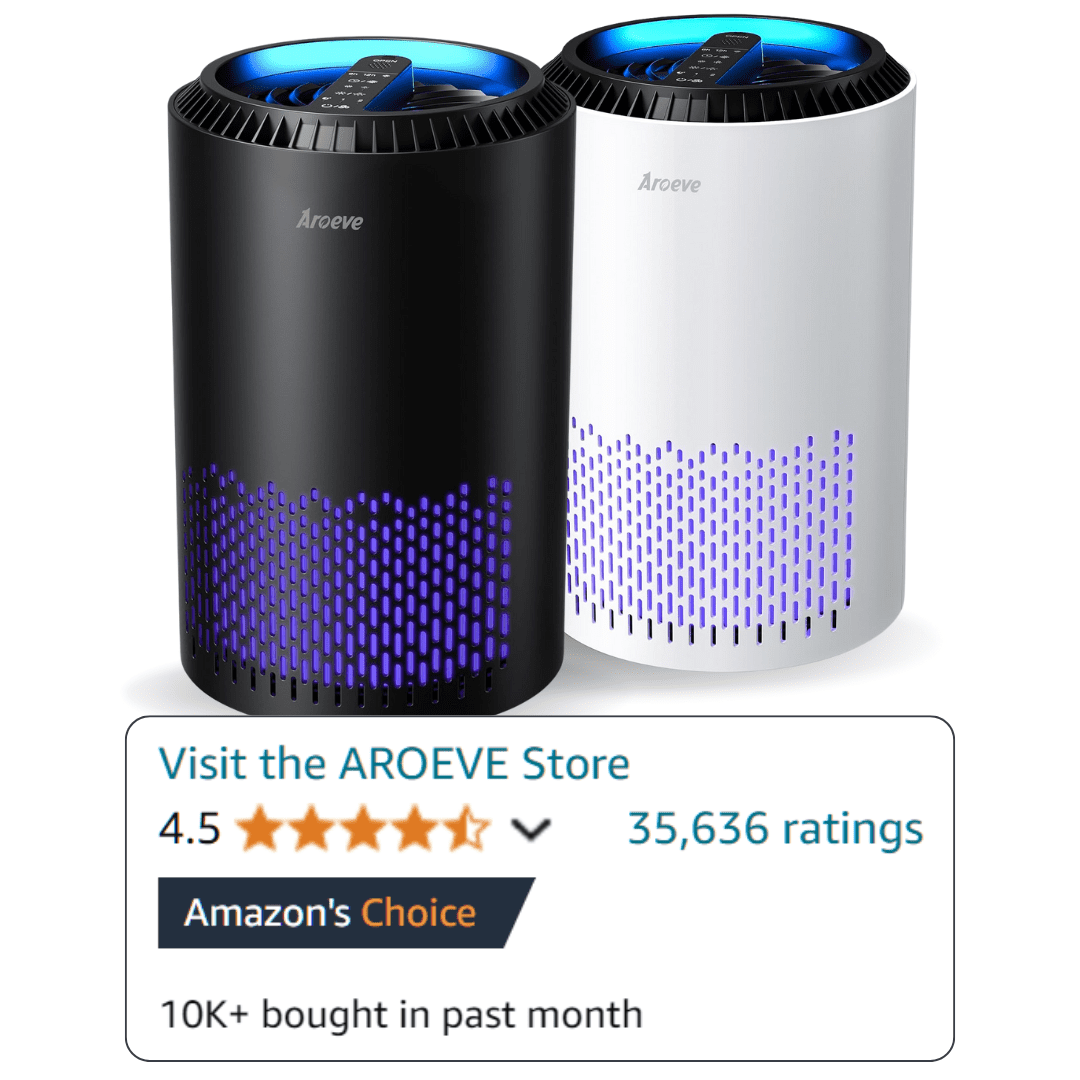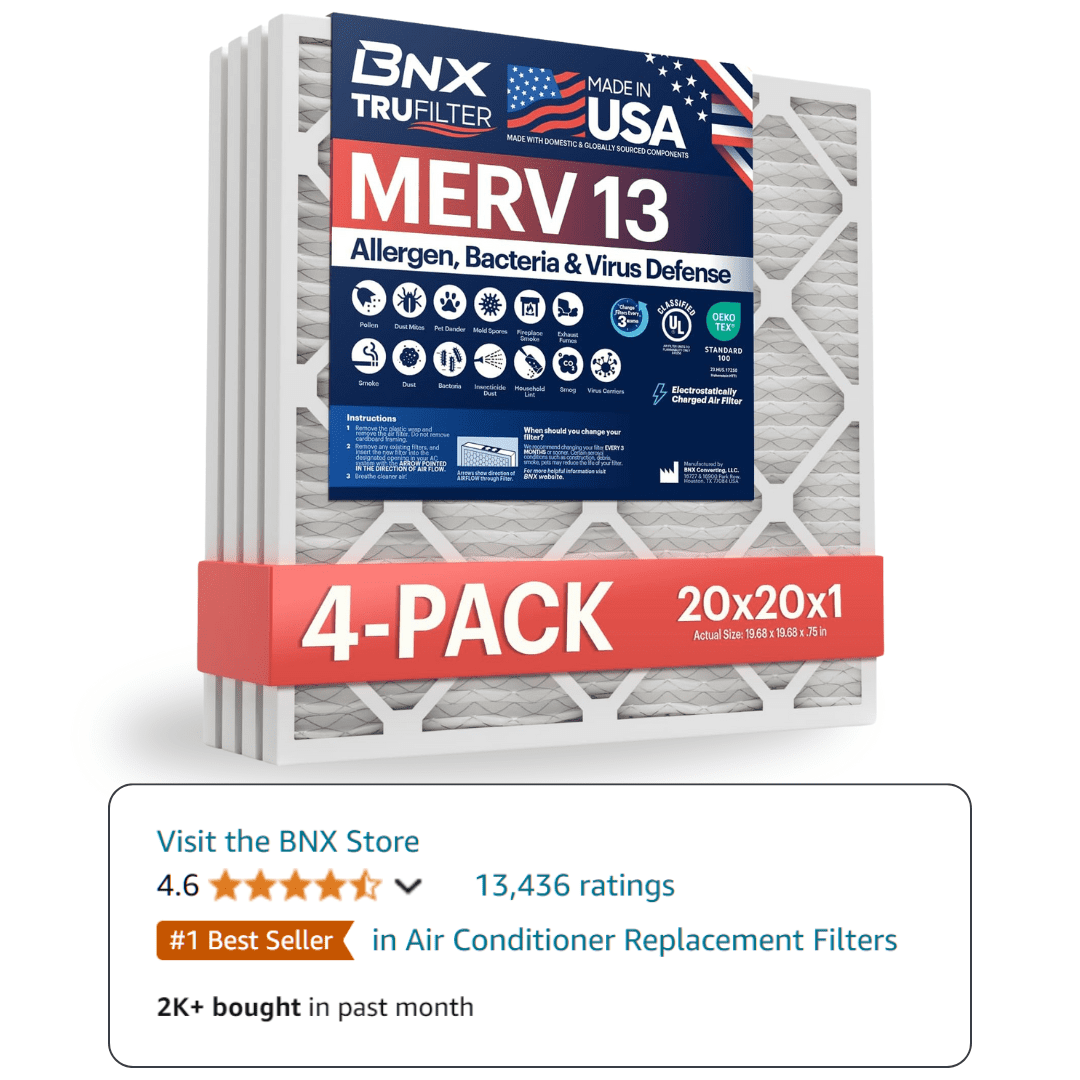What Humidity Level is Uncomfortable? Complete Comfort Guide (2025)
Humidity levels above 60% or below 30% relative humidity create uncomfortable living conditions that affect your health, sleep quality, and energy costs. The optimal comfort range sits between 40-50% relative humidity, where your body naturally regulates temperature without strain.
Understanding Humidity and Human Comfort
What is Relative Humidity?
Relative humidity measures the amount of water vapor in air compared to the maximum amount that air can hold at a specific temperature. At 50% RH, air contains half the moisture it could potentially hold. This measurement directly impacts how your body perceives temperature and comfort.
Your skin releases moisture through perspiration to cool your body. When humidity exceeds 60%, this natural cooling process slows dramatically. Sweat doesn’t evaporate efficiently, leaving you feeling sticky and overheated even at normal temperatures.
How Your Body Responds to Humidity Changes
Your respiratory system relies on properly humidified air to function optimally. The mucous membranes in your nose and throat need moisture levels between 40-60% RH to trap dust, allergens, and pathogens effectively.
Below 30% humidity, these protective barriers dry out and crack, allowing irritants direct access to your respiratory system. Above 60% humidity, excess moisture creates breeding conditions for mold, bacteria, and dust mites that trigger allergic reactions.
Your skin contains natural oils and moisture that maintain elasticity and protection. Low humidity pulls moisture from your skin faster than your body can replace it, causing dryness, cracking, and irritation. High humidity prevents natural moisture evaporation, leading to clogged pores and skin problems.
The Science Behind Humidity Discomfort
The ASHRAE Standard 55 defines thermal comfort based on temperature, humidity, air movement, and clothing levels. Research shows that humidity outside the 30-60% range triggers physiological stress responses that affect concentration, sleep, and overall well-being.
Your body’s thermoregulation system works hardest when humidity levels force it to compensate for inefficient cooling or heating. This extra effort translates to fatigue, irritability, and reduced cognitive performance.
Uncomfortable Humidity Levels: The Numbers
Too High: Above 60% Relative Humidity
Humidity levels above 60% RH create multiple comfort and health problems. Your sweat doesn’t evaporate properly, making you feel warmer than the actual temperature. This forces your air conditioning system to work harder, increasing energy costs by 15-25% according to EPA studies.
Mold growth accelerates rapidly above 60% humidity. Most mold species thrive in conditions above 65% RH, with visible growth appearing within 48-72 hours on organic materials like wood, paper, and fabric.
Dust mites multiply exponentially in humidity above 60%. These microscopic pests trigger asthma and allergic reactions in sensitive individuals. A single dust mite can produce 20 waste particles daily, each containing potent allergens.
Too Low: Below 30% Relative Humidity
Humidity below 30% RH causes immediate discomfort through static electricity buildup, dry skin, and respiratory irritation. Your nasal passages lose their natural moisture barrier, increasing susceptibility to viral infections by 23% according to NIH research.
Wood furniture, flooring, and musical instruments suffer structural damage in low humidity environments. Hardwood floors develop gaps, furniture joints loosen, and paint may crack or peel.
Low humidity makes you feel colder than the actual temperature, leading to higher heating costs. Your body loses heat more rapidly through increased evaporation, forcing heating systems to maintain higher temperatures for comfort.
The “Goldilocks Zone”: 40-50% RH
The 40-50% relative humidity range provides optimal comfort for most people. Your body’s natural cooling and heating mechanisms function efficiently without strain. Respiratory health remains protected while preventing mold growth and dust mite proliferation.
Energy costs stay minimized in this range because your perception of temperature aligns closely with actual measurements. You feel comfortable at standard thermostat settings without forcing HVAC systems to compensate for humidity-related discomfort.
Signs You’re Living in Uncomfortable Humidity
High Humidity Symptoms (Sticky, Stuffy, Mold Growth)
Condensation on windows, mirrors, and cold surfaces indicates humidity above 60%. This visible moisture creates perfect conditions for mold growth, particularly in bathrooms, basements, and poorly ventilated areas.
Your clothes feel damp even after drying completely. Fabrics retain moisture in high humidity environments, creating musty odors and potential mold growth in closets and storage areas.
Sleep quality deteriorates noticeably above 60% humidity. You wake up feeling sticky, unrested, and may experience night sweats even at comfortable temperatures. Bedding feels damp and uncomfortable.
Low Humidity Symptoms (Dry Skin, Static, Respiratory Issues)
Static electricity becomes problematic below 30% humidity. You experience shocks when touching metal objects, hair stands up, and synthetic fabrics cling uncomfortably to your body.
Dry, cracked skin appears first on hands, lips, and around the nose. Existing skin conditions like eczema worsen significantly in low humidity environments.
Frequent nosebleeds, dry throat, and increased susceptibility to respiratory infections signal dangerously low humidity levels. Your natural defense mechanisms can’t function properly without adequate moisture.
When to Take Action
Take immediate action when humidity readings consistently fall outside the 30-60% range for more than 24 hours. Short-term fluctuations are normal, but sustained uncomfortable levels require intervention.
Monitor humidity in multiple rooms, as levels vary significantly throughout your home. Basements typically run higher, while upper floors and rooms with heating sources run lower.
Health Impacts of Uncomfortable Humidity Levels
Respiratory Health Effects
The Mayo Clinic reports that humidity below 30% increases viral transmission rates by drying protective mucous membranes. Your nose and throat lose their ability to filter airborne pathogens effectively.
Asthma symptoms worsen in both high and low humidity conditions. Above 60% RH promotes allergen growth, while below 30% RH irritates already sensitive airways.
Chronic cough, sore throat, and sinus congestion often resolve when humidity returns to the 40-50% range. These symptoms frequently get misdiagnosed as allergies or infections when humidity is the actual cause.
Skin and Eye Irritation
Dry eyes become problematic below 35% humidity as tear film evaporates faster than your body can replace it. Contact lens wearers experience particular discomfort and may need to switch to glasses temporarily.
Eczema, psoriasis, and other skin conditions flare dramatically in low humidity. The skin’s protective barrier breaks down, allowing irritants and allergens to penetrate more easily.
High humidity above 60% can worsen acne and other skin conditions by preventing natural oil regulation and creating bacterial growth conditions.
Sleep Quality Impact
Sleep studies show that humidity outside the 40-60% range reduces REM sleep quality by 12-18%. Your body spends extra energy regulating temperature instead of focusing on restorative sleep processes.
Snoring increases in both high and low humidity conditions. Dry air irritates throat tissues, while humid air can cause swelling that restricts airflow.
Night sweats and restless sleep are common above 60% humidity, while dry throat and nasal congestion disrupt sleep below 30% humidity.
Vulnerable Populations (Children, Elderly, Asthma Sufferers)
Children are particularly sensitive to humidity extremes because their respiratory systems are still developing. The American Academy of Pediatrics recommends maintaining 40-50% RH in nurseries and children’s bedrooms.
Elderly individuals have reduced ability to regulate body temperature, making them more susceptible to humidity-related discomfort and health problems.
People with asthma, COPD, or other respiratory conditions experience symptom flares outside the optimal humidity range. Emergency room visits for respiratory issues increase 15-20% during periods of extreme humidity.
Measuring Humidity in Your Home
Digital Hygrometers vs. Analog Options
Digital hygrometers provide accuracy within 2-3% RH and often include temperature readings, memory functions, and trend tracking. Models with calibration capabilities maintain accuracy over time.
Analog hygrometers cost less but require regular calibration and typically have accuracy ranges of 5-10% RH. Hair-based models respond slowly to changes and may not reflect current conditions accurately.
Professional-grade instruments used by NAFA certified technicians provide accuracy within 1% RH but cost significantly more than consumer models.
Where to Place Humidity Monitors
Position monitors at breathing height, away from direct sunlight, heating vents, and moisture sources like bathrooms or kitchens. Central locations in main living areas provide the most useful readings.
Avoid placing monitors near exterior walls, windows, or doors where temperature fluctuations affect readings. Interior walls at least 3 feet from corners give more stable measurements.
Multiple monitors throughout your home reveal humidity variations between floors, rooms, and areas. Basements, bedrooms, and main living spaces often show significant differences.
Reading and Interpreting Results
Daily humidity fluctuations of 10-15% are normal as temperature changes throughout the day. Focus on average readings over 24-48 hour periods rather than momentary spikes or drops.
Seasonal patterns help predict when intervention is needed. Summer humidity typically peaks in late afternoon, while winter levels drop lowest during heating system operation.
Record readings for one week before making equipment purchases to understand your home’s specific patterns and problem areas.
Solutions for Uncomfortable Humidity
Dehumidification Options (Whole-House vs. Portable)
Whole-house dehumidifiers integrate with your HVAC system to maintain consistent humidity throughout your home. These units handle 70-130 pints daily and include automatic controls that maintain set points within 2-3% RH.
Portable dehumidifiers work well for single rooms or specific problem areas. Units rated for your room size (typically 30-70 pints daily) can effectively control humidity in bedrooms, basements, or other targeted spaces.
Energy-efficient models with Energy Star ratings reduce operating costs while maintaining performance. Look for units with built-in hygrometers and automatic shut-off features.
Humidification Solutions (Evaporative, Steam, Ultrasonic)
Evaporative humidifiers use fans to blow air through water-saturated wicks or filters. These self-regulating units can’t over-humidify and work well in dry climates, but require regular filter replacement.
Steam humidifiers boil water to create pure vapor, eliminating bacteria and mineral deposits. These units provide precise humidity control but consume more energy than other types.
Ultrasonic humidifiers use high-frequency vibrations to create fine mist. They operate quietly and efficiently but may disperse minerals from tap water, requiring distilled water for best results.
HVAC System Integration
Professional installation of humidity control systems ensures proper sizing and integration with existing equipment. Improperly sized units waste energy and fail to maintain consistent comfort levels.
Smart thermostats with humidity sensors automatically adjust both temperature and moisture levels for optimal comfort and efficiency. These systems learn your preferences and adjust settings based on outdoor conditions.
Ductwork modifications may be necessary for whole-house systems. Proper installation includes condensate drains, electrical connections, and control integration with existing HVAC equipment.
Natural Methods and Quick Fixes
Houseplants increase humidity through transpiration, but require 10-15 large plants per room to make noticeable differences. Boston ferns, peace lilies, and rubber plants are particularly effective.
Bathroom exhaust fans should run during and 30 minutes after showers to remove excess moisture. Kitchen range hoods help control cooking-related humidity spikes.
Opening windows during mild weather allows natural air exchange that balances indoor humidity with outdoor conditions. This works best when outdoor humidity falls within comfortable ranges.
Seasonal Humidity Management
Summer Humidity Control Strategies
Air conditioning naturally removes moisture as it cools air, but may not provide adequate dehumidification in mild weather. Supplemental dehumidification maintains comfort without overcooling your home.
Basement humidity often peaks in summer as warm, humid air contacts cool foundation walls. Dedicated basement dehumidifiers prevent mold growth and improve overall home comfort.
Proper ventilation in bathrooms, kitchens, and laundry areas prevents humidity buildup from daily activities. Exhaust fans should move 1 CFM per square foot of room area.
Winter Dry Air Solutions
Heating systems remove moisture from air as they warm it, often dropping humidity below 20% RH. Whole-house humidifiers integrated with furnaces provide consistent moisture addition.
Portable humidifiers in bedrooms improve sleep quality and reduce static electricity. Units with automatic controls maintain set points without over-humidifying.
Sealing air leaks reduces dry outdoor air infiltration while improving energy efficiency. Weather stripping, caulking, and proper insulation help maintain stable humidity levels.
Transitional Season Adjustments
Spring and fall require different strategies as outdoor humidity and temperature fluctuate rapidly. Programmable humidity controls adjust automatically to changing conditions.
Monitor humidity closely during season changes when heating and cooling systems cycle on and off frequently. Manual adjustments may be necessary until systems stabilize.
Regular maintenance of humidity control equipment ensures reliable operation when you need it most. Clean filters, check water supplies, and test controls before peak seasons.
Frequently Asked Questions
What humidity level is too uncomfortable to sleep?
Above 60% or below 30% RH significantly impacts sleep quality, with 40-50% being optimal for most people. Sleep studies show REM sleep quality decreases 12-18% outside this range as your body expends energy regulating temperature instead of focusing on restorative processes.
Can uncomfortable humidity levels make you sick?
Yes, both high humidity (promoting mold, bacteria, and dust mites) and low humidity (drying protective mucous membranes) cause health issues. NIH research shows viral infection rates increase 23% when humidity drops below 30% RH.
How quickly can I tell if humidity is uncomfortable?
Most people notice discomfort within 15-30 minutes of exposure to humidity levels outside the 30-60% range. Physical symptoms like sticky skin, static electricity, or dry throat appear almost immediately.
What’s the most uncomfortable humidity level?
Above 70% RH feels oppressively sticky as sweat can’t evaporate properly, while below 20% RH causes immediate dryness, static electricity, and respiratory irritation. Both extremes trigger physiological stress responses.
Does uncomfortable humidity affect my energy bills?
Yes, high humidity makes you feel warmer (raising AC costs by 15-25%) while low humidity makes you feel colder (increasing heating costs). Your HVAC system works harder to compensate for humidity-related temperature perception changes.
How do I know if my home’s humidity is uncomfortable without a meter?
Physical signs include condensation on windows (too high), static electricity when touching objects (too low), feeling sticky or clammy (too high), or experiencing dry skin and throat (too low). These symptoms appear before serious health effects develop.
Can plants help with uncomfortable humidity levels?
Some plants slightly increase humidity through transpiration, but you need 10-15 large plants per room to make noticeable differences. Plants work better as supplemental humidity sources rather than primary solutions for seriously uncomfortable levels.
What humidity level is uncomfortable for pets?
Pets are sensitive to the same ranges as humans, with discomfort typically starting above 60% or below 30% RH. Dogs and cats show signs of distress through excessive panting (high humidity) or dry, flaky skin (low humidity).
Maintaining humidity between 40-50% RH creates the most comfortable living environment while protecting your health, home, and energy costs. Regular monitoring and appropriate equipment ensure consistent comfort year-round.



